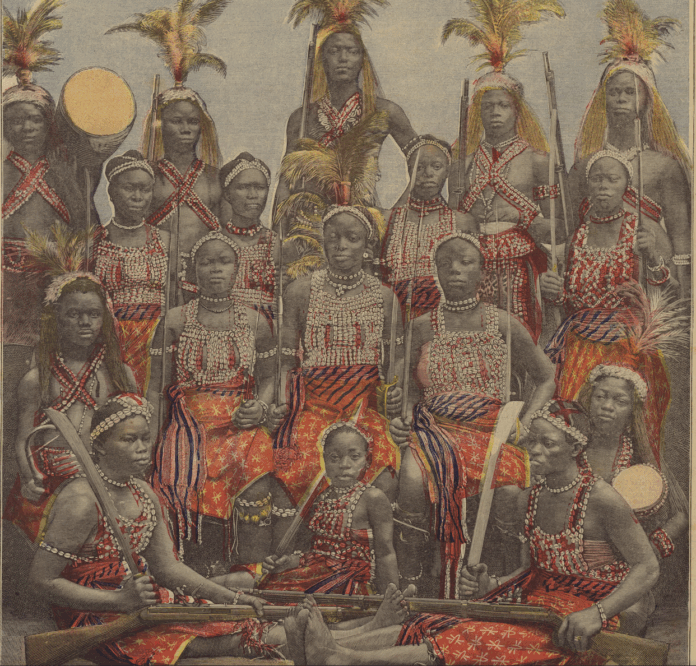In the heart of West Africa, long before modern conversations about women in the military, the Kingdom of Dahomey (present-day Benin) built one of the most formidable fighting forces the world had ever seen: an elite corps of women known as the Dahomey Amazons. Fierce, disciplined, and feared by enemies across the region, these women broke every stereotype about gender and warfare centuries ago.
The Amazons, called Mino in their own language (meaning “our mothers”), were not simply symbolic or ceremonial guards. They were professional soldiers, trained to fight, kill, and protect the king and the kingdom. French colonial officers who faced them in the 19th century often described them as more terrifying than their male counterparts. Some even admitted that hand-to-hand combat with the Amazons was among the most brutal experiences of their careers.
What made the Dahomey Amazons unique wasn’t just their existence but the role they played in society. In a time when women elsewhere were often excluded from political or military power, these warriors rose to positions of prestige. They enjoyed privileges many men in Dahomey could not: they were considered the king’s wives (though not in the romantic sense), exempted from marriage to ordinary men, and lived within the royal palace under the direct authority of the monarch. Their loyalty to the throne was absolute.
Training was intense. New recruits were often taken as teenagers and taught to endure pain, resist fear, and wield weapons ranging from spears and muskets to machetes. Reports tell of young Amazons being tested with violent initiation rituals—walking barefoot through thorny paths or executing prisoners—to prove their courage. The discipline created a unit so tough that European observers, steeped in their own ideas of female fragility, were stunned.
Unknown to many, the Dahomey Amazons were not simply an isolated curiosity of African history. They fought in several wars that shaped the region, including the campaigns against the Oyo Empire and later against French colonial expansion in the late 19th century. During the Franco-Dahomean Wars (1890–1894), the Amazons stood on the front lines, charging fearlessly against modern rifles and artillery. Although ultimately defeated, they left such a strong impression that even French commanders acknowledged their bravery in official reports.
Their influence extended beyond the battlefield. The Mino were living proof of Dahomey’s political innovation, showing that power and leadership were not exclusively male domains. In fact, some historians argue that their prominence stemmed from Dahomey’s long-standing tradition of balancing male and female authority at court—a cultural practice that set the kingdom apart from many of its neighbors.
Today, the Dahomey Amazons live on in popular memory and pop culture. They inspired aspects of the Dora Milaje, the fictional women warriors of Marvel’s Black Panther, bringing global attention to their story. But while movies dramatize their legend, the real Amazons were far more complex—products of a kingdom navigating survival, politics, and war in a volatile region.
The legacy of the Dahomey Amazons is a reminder that Africa’s past holds stories far richer and more surprising than stereotypes allow. These women were not only warriors; they were symbols of courage, discipline, and the ability to redefine what was possible in their time. And in telling their story today, we see how Africa continues to challenge and expand our understanding of history.

